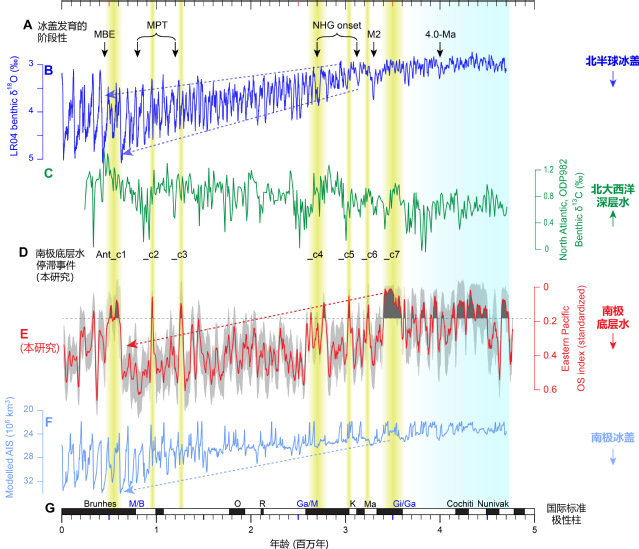Liang Yi1*, Martín Medina-Elizalde2, Liangcheng Tan3,4, David B. Kemp5, Yanzhen Li3,5, Gunther Kletetschka6,7, Qiang Xie8†, Huiqiang Yao9,10*, Huaiyu He11,12, Chenglong Deng11,12*, James G. Ogg13,14
1State Key Laboratory of Marine Geology, Tongji University, Shanghai, China.
2Department of Geosciences, University of Massachusetts, Amherst, MA, USA.
3State Key Laboratory of Loess and Quaternary Geology, Institute of Earth Environment, Chinese Academy of Sciences, Xi’an, China.
4Institute of Global Environmental Change, Xi’an Jiaotong University, Xi’an, China.
5State Key Laboratory for Biogeology and Environmental Geology and Hubei Key Laboratory of Critical Zone Evolution, School of Earth Sciences, China University of Geosciences(Wuhan), Wuhan, China.
6Institute of Hydrogeology, Engineering Geology, and Applied Geophysics, Faculty of Science, Charles University, Prague, Czech Republic.
7Geophysical Institute, University of Alaska Fairbanks, Fairbanks, AK, USA.
8Institute of Deep-sea Science and Engineering, Chinese Academy of Sciences, Sanya, China.
9Key Laboratory of Marine Mineral Resources, Ministry of Natural Resources, Guangzhou Marine Geological Survey, China Geological Survey, Guangzhou, China.
10Southern Marine Science and Engineering Guangdong Laboratory(Guangzhou), Guangzhou, China.
11State Key Laboratory of Lithospheric Evolution, Institute of Geology and Geophysics, Chinese Academy of Sciences, Beijing, China.
12University of Chinese Academy of Sciences, Beijing, China.
13Department of Earth, Atmospheric, and Planetary Sciences, Purdue University, West Lafayette, IN, USA.
14State Key Laboratory of Oil and Gas Reservoir Geology and Exploitation, Chengdu University of Technology, Chengdu, China.
Abstract:
Antarctic bottom water (AABW) production is a key factor governing global ocean circulation, and the present disintegration of the Antarctic Ice Sheet slows it. However, its long-term variability has not been well documented. On the basis of high-resolution chemical scanning of a well-dated marine ferromanganese nodule from the eastern Pacific, we derive a record of abyssal ventilation spanning the past 4.7 million years and evaluate its linkage to AABW formation over this period. We find that abyssal ventilation was relatively weak in the early Pliocene and persistently intensified from 3.4 million years ago onward. Seven episodes of markedly reduced ocean ventilation indicative of AABW formation collapse are identified since the late Pliocene, which were accompanied by key stages of Northern Hemisphere glaciation. We suggest that the interpolar climate synchronization within these inferred seven collapse events may have intensified global glaciation by inducing poleward moisture transport in the Northern Hemisphere.

Full Artical: https://www.science.org/doi/10.1126/sciadv.add1467


